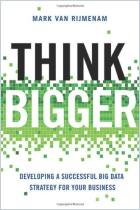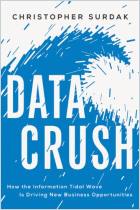Únase a getAbstract para acceder al resumen.

Únase a getAbstract para acceder al resumen.
Bill Franks
Taming the Big Data Tidal Wave
Finding Opportunities in Huge Data Streams with Advanced Analytics
Wiley, 2012
¿De qué se trata?
Are you ready to monetize the tidal wave of data rushing toward you?
Recommendation
Analytics expert Bill Franks argues that the onslaught of “big data,” the flood of information that is sweeping over every business, might be overwhelming. He’s clear that big data’s new and varied formats may seem strange to users, a complication that makes analysis difficult. Franks provides conceptual tools and examples readers can use to get the most from the ever-increasing data supply. Laypeople may find his text somewhat dry and his subject matter complex and specialized, but they are not this author’s primary audience. getAbstract recommends his smart manual to executives trying to formulate analysis and knowledge management programs, analysts themselves, and those interested in how technology changes business.
Summary
About the Author
Bill Franks is chief analytics officer for Teradata. He oversees the Business Analytics Innovation Center, which Teradata sponsors.




















Comment on this summary